-
EXECUTIVE SUMMARY
-
MARKET ATTRACTIVENESS ANALYSIS 16
- GLOBAL FEED ACIDIFIERS MARKET, BY TYPE 16
- GLOBAL FEED ACIDIFIERS MARKET, BY FORM 17
- GLOBAL FEED ACIDIFIERS MARKET, BY COMPOUND 18
- GLOBAL FEED ACIDIFIERS MARKET, BY LIVESTOCK 19
- GLOBAL FEED ACIDIFIERS MARKET, BY REGION 20
-
MARKET INTRODUCTION
-
DEFINITION 21
-
SCOPE OF THE STUDY 21
-
RESEARCH OBJECTIVE 21
-
MARKET STRUCTURE 21
-
KEY BUYING CRITERIA 22
-
RESEARCH METHODOLOGY
-
RESEARCH PROCESS 23
-
PRIMARY RESEARCH 24
-
SECONDARY RESEARCH 25
-
MARKET SIZE ESTIMATION 25
-
FORECAST MODEL 27
-
LIST OF ASSUMPTIONS 28
-
MARKET INSIGHTS
-
MARKET DYNAMICS
-
INTRODUCTION 31
-
DRIVERS 32
- GROWTH OF THE LIVESTOCK INDUSTRY 32
- NEGATIVE PREFERENCE TOWARDS FEED ANTIBIOTICS 33
- DRIVERS IMPACT ANALYSIS 33
-
RESTRAINT 34
- INCREASING PRICE OF THE PRODUCT 34
- RESTRAINTS IMPACT ANALYSIS 34
-
OPPORTUNITIES 35
- ENCAPSULATION TECHNIQUES 35
-
CHALLENGES 35
- AVAILABILITY OF SUBSTITUTES 35
-
MARKET FACTOR ANALYSIS
-
VALUE CHAIN ANALYSIS 36
- RAW MATERIAL PROCUREMENT 37
- PROCESSING 37
- PACKAGING 37
- RAW MATERIAL PROCUREMENT 38
- PROCESSING 38
- PACKAGING 38
-
SUPPLY CHAIN ANALYSIS 38
-
PORTER’S FIVE FORCES MODEL 39
- THREAT OF NEW ENTRANTS 40
- BARGAINING POWER OF SUPPLIERS 40
- BARGAINING POWER OF BUYERS 40
- THREAT OF SUBSTITUTES 40
- INTENSITY OF RIVALRY 40
-
IMPACT OF COVID-19 OUTBREAK ON THE GLOBAL FEED ACIDIFIERS MARKET 41
-
REGULATIONS FOR ORGANIC ACIDS IN ANIMAL FEED
-
SAFETY STANDARDS FOR PRODUCTION OF ORGANIC ACIDS FOR FEED 42
-
QUALITY STANDARDS 43
-
PRODUCT LABELLING & INFORMATION 44
-
REGULATIONS FOR MARKETING 44
-
GLOBAL FEED ACIDIFIERS MARKET, BY TYPE
-
OVERVIEW 45
- GLOBAL FEED ACIDIFIERS MARKET ESTIMATES & FORECAST, BY TYPE, 2020-2027 46
-
PROPIONIC ACID 46
- PROPIONIC ACID: MARKET ESTIMATES & FORECAST, BY REGION, 2020-2027 47
-
FORMIC ACID 47
- FORMIC ACID: MARKET ESTIMATES & FORECAST, BY REGION, 2020-2027 47
-
LACTIC ACID 48
- LACTIC ACID: MARKET ESTIMATES & FORECAST, BY REGION, 2020-2027 48
-
SORBIC ACID 48
- SORBIC ACID: MARKET ESTIMATES & FORECAST, BY REGION, 2020-2027 48
-
CITRIC ACID 49
- CITRIC ACID: MARKET ESTIMATES & FORECAST, BY REGION, 2020-2027 49
-
MALIC ACID 49
- MALIC ACID: MARKET ESTIMATES & FORECAST, BY REGION, 2020-2027 50
-
BUTYRIC ACID 50
- BUTYRIC ACID: MARKET ESTIMATES & FORECAST, BY REGION, 2020-2027 50
-
LAURIC ACID 51
- LAURIC ACID: MARKET ESTIMATES & FORECAST, BY REGION, 2020-2027 51
-
OTHERS 51
- OTHERS: MARKET ESTIMATES & FORECAST, BY REGION, 2020-2027 52
-
GLOBAL FEED ACIDIFIERS MARKET, BY FORM
-
OVERVIEW 53
- GLOBAL FEED ACIDIFIERS MARKET ESTIMATES & FORECAST, BY FORM, 2020-2027 54
-
DRY 54
- DRY: MARKET ESTIMATES & FORECAST, BY REGION, 2020-2027 54
-
LIQUID 55
- LIQUID: MARKET ESTIMATES & FORECAST, BY REGION, 2020-2027 55
-
GLOBAL FEED ACIDIFIERS MARKET, BY COMPOUND
-
OVERVIEW 56
- GLOBAL FEED ACIDIFIERS MARKET ESTIMATES & FORECAST, BY COMPOUND, 2020-2027 57
-
BLENDS 57
- BLENDS: MARKET ESTIMATES & FORECAST, BY REGION, 2020-2027 57
-
SINGLE 58
- SINGLE: MARKET ESTIMATES & FORECAST, BY REGION, 2020-2027 58
-
GLOBAL FEED ACIDIFIERS MARKET, BY LIVESTOCK
-
OVERVIEW 59
- GLOBAL FEED ACIDIFIERS MARKET ESTIMATES & FORECAST, BY LIVESTOCK, 2020-2027 60
-
POULTRY 60
- POULTRY: MARKET ESTIMATES & FORECAST, BY REGION, 2020-2027 60
-
SWINE 61
- SWINE: MARKET ESTIMATES & FORECAST, BY REGION, 2020-2027 61
-
RUMINANTS 61
- RUMINANTS: MARKET ESTIMATES & FORECAST, BY REGION, 2020-2027 62
-
AQUACULTURE 62
- AQUACULTURE: MARKET ESTIMATES & FORECAST, BY REGION, 2020-2027 62
-
OTHERS 63
- OTHERS: MARKET ESTIMATES & FORECAST, BY REGION, 2020-2027 63
-
GLOBAL FEED ACIDIFIERS MARKET, BY REGION
-
OVERVIEW 64
-
NORTH AMERICA 66
- US 69
- CANADA 71
- MEXICO 73
-
EUROPE 75
- GERMANY 78
- UK 80
- FRANCE 82
- SPAIN 84
- ITALY 86
- REST OF EUROPE 88
-
ASIA-PACIFIC 90
- CHINA 93
- JAPAN 95
- INDIA 97
- AUSTRALIA & NEW ZEALAND 99
- REST OF ASIA-PACIFIC 101
-
REST OF THE WORLD 103
- SOUTH AMERICA 106
- MIDDLE EAST 108
- AFRICA 110
-
COMPETITIVE LANDSCAPE
-
COMPETITIVE OVERVIEW 112
-
KEY DEVELOPMENTS 113
-
COMPETITIVE BENCHMARKING 114
-
COMPANY PROFILES
-
KEMIN INDUSTRIES, INC. 115
- COMPANY OVERVIEW 115
- FINANCIAL OVERVIEW 115
- PRODUCTS OFFERED 115
- KEY DEVELOPMENTS 115
- SWOT ANALYSIS 116
- KEY STRATEGIES 116
-
BASF SE 117
- COMPANY OVERVIEW 117
- FINANCIAL OVERVIEW 117
- PRODUCTS OFFERED 118
- KEY DEVELOPMENTS 118
- SWOT ANALYSIS 118
- KEY STRATEGIES 119
-
YARA 120
- COMPANY OVERVIEW 120
- FINANCIAL OVERVIEW 121
- PRODUCTS OFFERED 121
- KEY DEVELOPMENTS 121
- SWOT ANALYSIS 122
- KEY STRATEGIES 122
-
PERSTORP 123
- COMPANY OVERVIEW 123
- FINANCIAL OVERVIEW 123
- PRODUCTS OFFERED 124
- KEY DEVELOPMENTS 124
- SWOT ANALYSIS 125
- KEY STRATEGIES 125
-
BIOMIN HOLDING GMBH 126
- COMPANY OVERVIEW 126
- FINANCIAL OVERVIEW 126
- PRODUCTS OFFERED 126
- KEY DEVELOPMENTS 126
- SWOT ANALYSIS 127
- KEY STRATEGIES 127
-
ADDCON GMBH 128
- COMPANY OVERVIEW 128
- FINANCIAL OVERVIEW 128
- PRODUCTS OFFERED 128
- KEY DEVELOPMENTS 128
- SWOT ANALYSIS 129
- KEY STRATEGIES 129
-
IMPEXTRACO NV 130
- COMPANY OVERVIEW 130
- FINANCIAL OVERVIEW 130
- PRODUCTS OFFERED 130
- KEY DEVELOPMENTS 130
- KEY STRATEGIES 131
-
NOVUS INTERNATIONAL 132
- COMPANY OVERVIEW 132
- FINANCIAL OVERVIEW 132
- PRODUCTS OFFERED 132
- KEY DEVELOPMENTS 132
- KEY STRATEGIES 132
-
CORBION NV 133
- COMPANY OVERVIEW 133
- FINANCIAL OVERVIEW 133
- PRODUCTS OFFERED 134
- KEY DEVELOPMENTS 134
- KEY STRATEGIES 134
-
PANCOSMA 135
- COMPANY OVERVIEW 135
- FINANCIAL OVERVIEW 135
- PRODUCTS OFFERED 135
- KEY DEVELOPMENTS 135
- KEY STRATEGIES 135
-
REFERENCES
-
LIST OF TABLES
-
PRIMARY INTERVIEWS 24
-
LIST OF ASSUMPTIONS 28
-
CLASSIFICATION OF COMMONLY USED ORGANIC ACIDS AND SALTS UNDER EU LEGISLATION 43
-
GLOBAL FEED ACIDIFIERS MARKET ESTIMATES & FORECAST, BY TYPE, 2020-2027 (USD MILLION) 46
-
PROPIONIC ACID: MARKET ESTIMATES & FORECAST, BY REGION, 2020-2027 (USD MILLION) 47
-
FORMIC ACID: MARKET ESTIMATES & FORECAST, BY REGION, 2020-2027 (USD MILLION) 47
-
LACTIC ACID: MARKET ESTIMATES & FORECAST, BY REGION, 2020-2027 (USD MILLION) 48
-
SORBIC ACID: MARKET ESTIMATES & FORECAST, BY REGION, 2020-2027 (USD MILLION) 48
-
CITRIC ACID: MARKET ESTIMATES & FORECAST, BY REGION, 2020-2027 (USD MILLION) 49
-
MALIC ACID: MARKET ESTIMATES & FORECAST, BY REGION, 2020-2027 (USD MILLION) 50
-
BUTYRIC ACID: MARKET ESTIMATES & FORECAST, BY REGION, 2020-2027 (USD MILLION) 50
-
LAURIC ACID: MARKET ESTIMATES & FORECAST, BY REGION, 2020-2027 (USD MILLION) 51
-
OTHERS: MARKET ESTIMATES & FORECAST, BY REGION, 2020-2027 (USD MILLION) 52
-
GLOBAL FEED ACIDIFIERS MARKET ESTIMATES & FORECAST, BY FORM, 2020-2027 (USD MILLION) 54
-
DRY: MARKET ESTIMATES & FORECAST, BY REGION, 2020-2027 (USD MILLION) 54
-
LIQUID: MARKET ESTIMATES & FORECAST, BY REGION, 2020-2027 (USD MILLION) 55
-
GLOBAL FEED ACIDIFIERS MARKET ESTIMATES & FORECAST, BY COMPOUND, 2020-2027 (USD MILLION) 57
-
BLENDS: MARKET ESTIMATES & FORECAST, BY REGION, 2020-2027 (USD MILLION) 57
-
SINGLE: MARKET ESTIMATES & FORECAST, BY REGION, 2020-2027 (USD MILLION) 58
-
GLOBAL FEED ACIDIFIERS MARKET ESTIMATES & FORECAST, BY LIVESTOCK, 2020-2027 (USD MILLION) 60
-
POULTRY: MARKET ESTIMATES & FORECAST, BY REGION, 2020-2027 (USD MILLION) 60
-
SWINE: MARKET ESTIMATES & FORECAST, BY REGION, 2020-2027 (USD MILLION) 61
-
RUMINANTS: MARKET ESTIMATES & FORECAST, BY REGION, 2020-2027 (USD MILLION) 62
-
AQUACULTURE: MARKET ESTIMATES & FORECAST, BY REGION, 2020-2027 (USD MILLION) 62
-
OTHERS: MARKET ESTIMATES & FORECAST, BY REGION, 2020-2027 (USD MILLION) 63
-
GLOBAL FEED ACIDIFIERS MARKET ESTIMATES & FORECAST, BY REGION, 2020-2027 (USD MILLION) 65
-
NORTH AMERICA: MARKET ESTIMATES & FORECAST, BY COUNTRY, 2020-2027 (USD MILLION) 67
-
NORTH AMERICA: FEED ACIDIFIERS MARKET, BY TYPE, 2020-2027 (USD MILLION) 67
-
NORTH AMERICA: FEED ACIDIFIERS MARKET, BY FORM, 2020-2027 (USD MILLION) 68
-
NORTH AMERICA: FEED ACIDIFIERS MARKET, BY COMPOUND, 2020-2027 (USD MILLION) 68
-
NORTH AMERICA: FEED ACIDIFIERS MARKET, BY LIVESTOCK, 2020-2027 (USD MILLION) 68
-
US: FEED ACIDIFIERS MARKET, BY TYPE, 2020-2027 (USD MILLION) 69
-
US: FEED ACIDIFIERS MARKET, BY FORM, 2020-2027 (USD MILLION) 69
-
US: FEED ACIDIFIERS MARKET, BY COMPOUND, 2020-2027 (USD MILLION) 70
-
US: FEED ACIDIFIERS MARKET, BY LIVESTOCK, 2020-2027 (USD MILLION) 70
-
CANADA: FEED ACIDIFIERS MARKET, BY TYPE, 2020-2027 (USD MILLION) 71
-
CANADA: FEED ACIDIFIERS MARKET, BY FORM, 2020-2027 (USD MILLION) 71
-
CANADA: FEED ACIDIFIERS MARKET, BY COMPOUND, 2020-2027 (USD MILLION) 72
-
CANADA: FEED ACIDIFIERS MARKET, BY LIVESTOCK, 2020-2027 (USD MILLION) 72
-
MEXICO: FEED ACIDIFIERS MARKET, BY TYPE, 2020-2027 (USD MILLION) 73
-
MEXICO: FEED ACIDIFIERS MARKET, BY FORM, 2020-2027 (USD MILLION) 73
-
MEXICO: FEED ACIDIFIERS MARKET, BY COMPOUND, 2020-2027 (USD MILLION) 74
-
MEXICO: FEED ACIDIFIERS MARKET, BY LIVESTOCK, 2020-2027 (USD MILLION) 74
-
EUROPE: MARKET ESTIMATES & FORECAST, BY COUNTRY, 2020-2027 (USD MILLION) 75
-
EUROPE: FEED ACIDIFIERS MARKET, BY TYPE, 2020-2027 (USD MILLION) 76
-
EUROPE: FEED ACIDIFIERS MARKET, BY FORM, 2020-2027 (USD MILLION) 76
-
EUROPE: FEED ACIDIFIERS MARKET, BY COMPOUND, 2020-2027 (USD MILLION) 77
-
EUROPE: FEED ACIDIFIERS MARKET, BY LIVESTOCK, 2020-2027 (USD MILLION) 77
-
GERMANY: FEED ACIDIFIERS MARKET, BY TYPE, 2020-2027 (USD MILLION) 78
-
GERMANY: FEED ACIDIFIERS MARKET, BY FORM, 2020-2027 (USD MILLION) 78
-
GERMANY: FEED ACIDIFIERS MARKET, BY COMPOUND, 2020-2027 (USD MILLION) 79
-
GERMANY: FEED ACIDIFIERS MARKET, BY LIVESTOCK, 2020-2027 (USD MILLION) 79
-
UK: FEED ACIDIFIERS MARKET, BY TYPE, 2020-2027 (USD MILLION) 80
-
UK: FEED ACIDIFIERS MARKET, BY FORM, 2020-2027 (USD MILLION) 80
-
UK: FEED ACIDIFIERS MARKET, BY COMPOUND, 2020-2027 (USD MILLION) 81
-
UK: FEED ACIDIFIERS MARKET, BY LIVESTOCK, 2020-2027 (USD MILLION) 81
-
FRANCE: FEED ACIDIFIERS MARKET, BY TYPE, 2020-2027 (USD MILLION) 82
-
FRANCE: FEED ACIDIFIERS MARKET, BY FORM, 2020-2027 (USD MILLION) 82
-
FRANCE: FEED ACIDIFIERS MARKET, BY COMPOUND, 2020-2027 (USD MILLION) 83
-
FRANCE: FEED ACIDIFIERS MARKET, BY LIVESTOCK, 2020-2027 (USD MILLION) 83
-
SPAIN: FEED ACIDIFIERS MARKET, BY TYPE, 2020-2027 (USD MILLION) 84
-
SPAIN: FEED ACIDIFIERS MARKET, BY FORM, 2020-2027 (USD MILLION) 84
-
SPAIN: FEED ACIDIFIERS MARKET, BY COMPOUND, 2020-2027 (USD MILLION) 85
-
SPAIN: FEED ACIDIFIERS MARKET, BY LIVESTOCK, 2020-2027 (USD MILLION) 85
-
ITALY: FEED ACIDIFIERS MARKET, BY TYPE, 2020-2027 (USD MILLION) 86
-
ITALY: FEED ACIDIFIERS MARKET, BY FORM, 2020-2027 (USD MILLION) 86
-
ITALY: FEED ACIDIFIERS MARKET, BY COMPOUND, 2020-2027 (USD MILLION) 87
-
ITALY: FEED ACIDIFIERS MARKET, BY LIVESTOCK, 2020-2027 (USD MILLION) 87
-
REST OF EUROPE: FEED ACIDIFIERS MARKET, BY TYPE, 2020-2027 (USD MILLION) 88
-
REST OF EUROPE: FEED ACIDIFIERS MARKET, BY FORM, 2020-2027 (USD MILLION) 88
-
REST OF EUROPE: FEED ACIDIFIERS MARKET, BY COMPOUND, 2020-2027 (USD MILLION) 89
-
REST OF EUROPE: FEED ACIDIFIERS MARKET, BY LIVESTOCK, 2020-2027 (USD MILLION) 89
-
ASIA-PACIFIC: MARKET ESTIMATES & FORECAST, BY COUNTRY, 2020-2027 (USD MILLION) 90
-
ASIA-PACIFIC: FEED ACIDIFIERS MARKET, BY TYPE, 2020-2027 (USD MILLION) 91
-
ASIA-PACIFIC: FEED ACIDIFIERS MARKET, BY FORM, 2020-2027 (USD MILLION) 91
-
ASIA-PACIFIC: FEED ACIDIFIERS MARKET, BY COMPOUND, 2020-2027 (USD MILLION) 92
-
ASIA-PACIFIC: FEED ACIDIFIERS MARKET, BY LIVESTOCK, 2020-2027 (USD MILLION) 92
-
CHINA: FEED ACIDIFIERS MARKET, BY TYPE, 2020-2027 (USD MILLION) 93
-
CHINA: FEED ACIDIFIERS MARKET, BY FORM, 2020-2027 (USD MILLION) 93
-
CHINA: FEED ACIDIFIERS MARKET, BY COMPOUND, 2020-2027 (USD MILLION) 94
-
CHINA: FEED ACIDIFIERS MARKET, BY LIVESTOCK, 2020-2027 (USD MILLION) 94
-
JAPAN: FEED ACIDIFIERS MARKET, BY TYPE, 2020-2027 (USD MILLION) 95
-
J

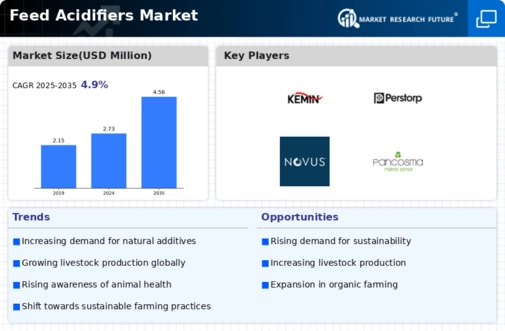

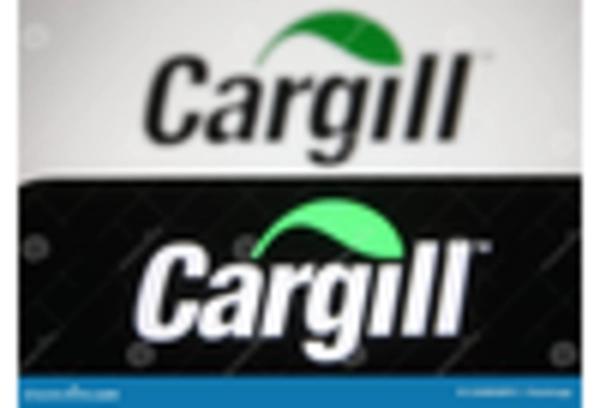

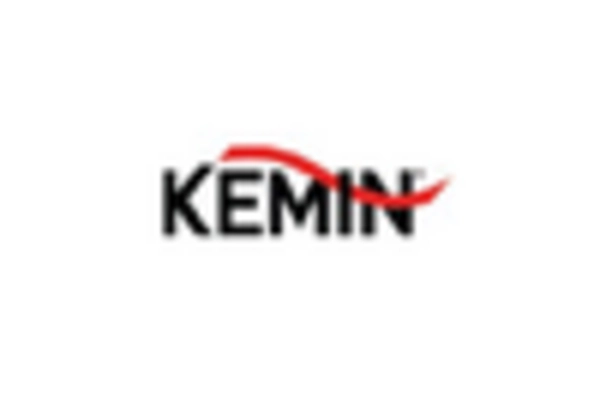
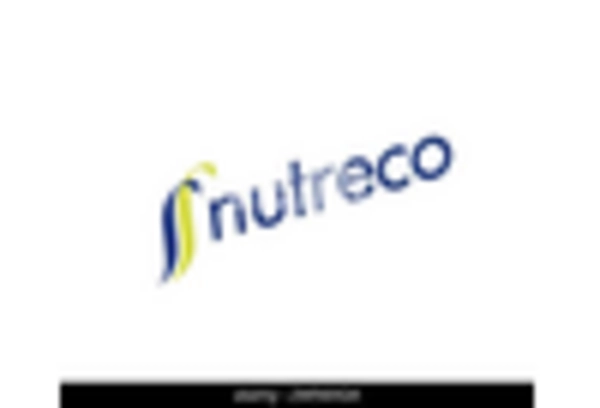
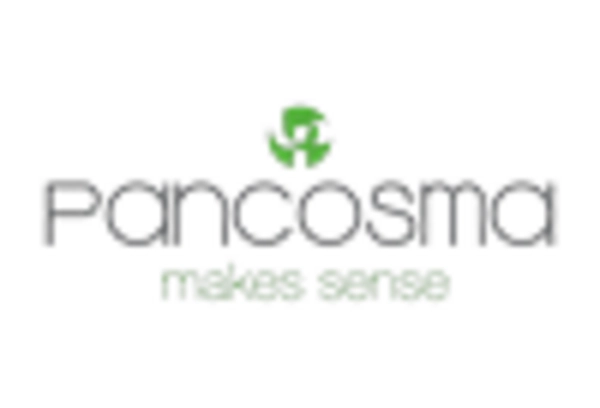









Leave a Comment